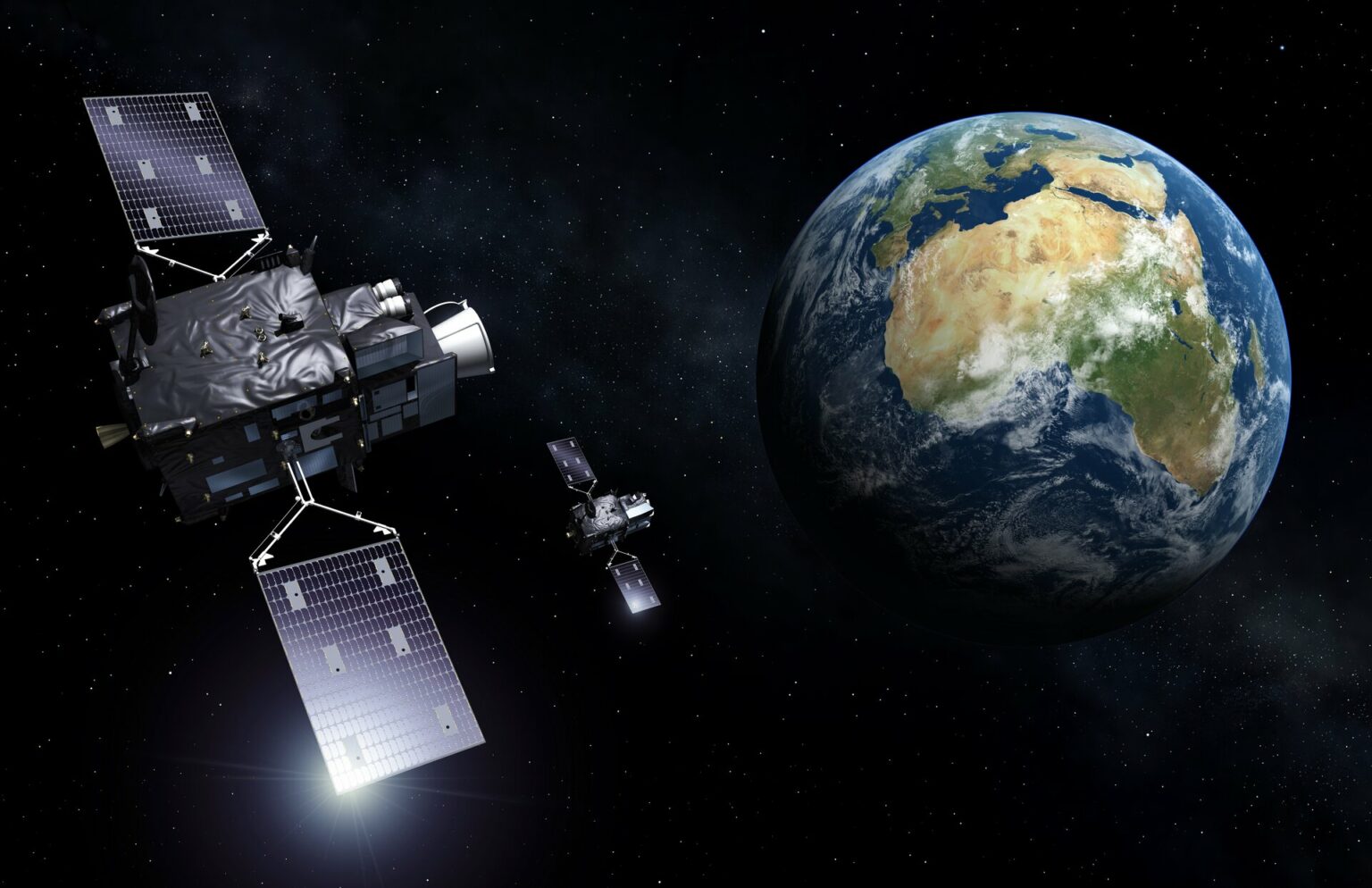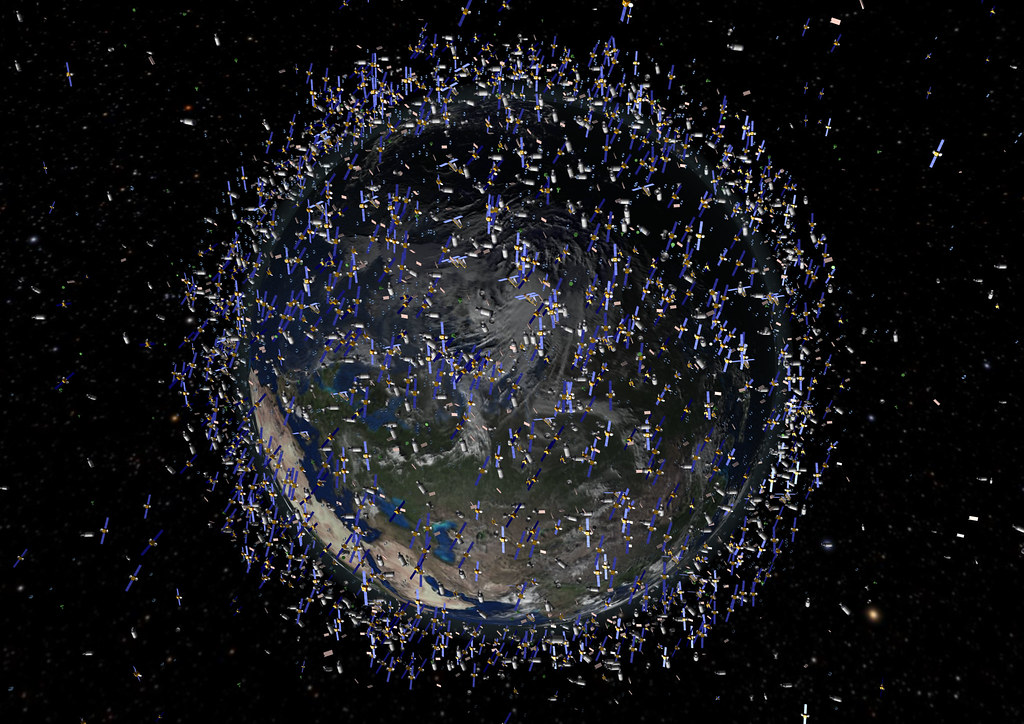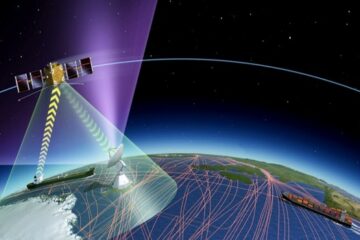What are we talking about
I am sure you have all heard about the latest movie “Don’t look up” by Adam McKay, at least because it was starring Leonardo Di Caprio.
This movie ironically foreshadows the events and reactions the world would have if the discovery of a comet hitting the planet would come out.
The results are not auspicious. Indeed, it emerges from the governments and individuals’ reactions the unawareness that lies behind the space sector among the population. The naïveté of individuals is at its maximum extent with a purpose: sending a clear message of realization of what surrounds us.
To demonstrate we have gotten the message, we should acknowledge, or at least be aware of what stands above us.
The human contribution in space reflects itself at most in the satellite complex, even though it’s surely not limited to it. For this purpose, an overview of this aspect will be given.
Over the past years, both the private and public sector have congested space to assert their dominance and secure the resources and opportunities that outer space presents.
As for satellites, they tend to be the most concrete assets to contribute to all aspects of modern life. Given their diversified capacities, they become of fundamental necessity in everyday life, in activities such as television broadcasting and geo-localization. But also, it deeply concerns sectors such as international diplomacy and human security.
The core of the topic has been deeply analyzed in the “Vienna Declaration on Space and Human Development” of 1999. The Vienna Declaration listed the benefits of space resources, asserting again what can be considered a constitutional principle of outer space legislation, namely that space technology is to be used for the benefit of all nations and peoples, and that its use should be extended to developing countries. As for the sectors that would benefit from space technologies, the Declaration mentioned numerous areas. Some that deserve to be mentioned are mitigation of natural disasters, through Earth observation and by tracking depletions of natural resources, and enhanced transport security, with improved search and rescue operations and geodesy. An interesting aspect that was mentioned is the improvement of public health services through telemedicine and by monitoring infectious diseases, which might sound ironical given the recent Covid-19 pandemic.
To deepen our focus, let’s take into consideration something we are way more familiar with: weather forecasts. The impact of this service is gigantic, not only we base our day-to-day activity on weather, but entire sectors completely depend on it. Let’s think of the agricultural industry; their entire operations rely on temperature projections.
It’s common knowledge that weather forecasts are possible because of satellites’ activity, but how does the process really work?
Forecasts rely on data from satellites placed in two different types of orbit, in order to offer complementary perspectives of Earth.
These satellites are indeed placed both in geostationary orbit (around 36.000 km above the equator), and in polar orbit (a few hundred km above the surface). Satellites placed in geostationary orbit remain stationary with respect to the rotating Earth, and thus they can record and transmit continuously images of the whole hemisphere below. They provide important information on destructive weather phenomena, for instance continental-scale thunderstorm fronts and hurricanes. Whereas satellites in polar orbit fly from pole to pole around the Earth, collecting data from all over the world in few days.

Another phenomenon has to be taken into account to thoroughly widen our understanding, namely telecommunication satellites. The European Space Agency (ESA), in an introductory article, poses very curious questions when dealing with this topic. The Agency asks, “did you know that many newspapers and magazines are produced locally but printed centrally?” indeed, the content of the paper is sent to the printing plants using satellite links. This fun fact draws the attention to the centrality of these assets in daily modern life. Satellite communication indeed, is the use of satellites to provide communication links between disparate points on Earth, it obviously plays an essential role in the global telecommunications system. Over 2000 artificial satellites are now in use and positioned in various orbits. As to give a simplified insight on how satellite communication works, it has to be noted that it is made up of two main components. These are the ground segment, consisting of fixed or mobile transmission and reception, and the space segment, which consists of the satellite itself. The process follows the transmission of a signal from an Earth station to a satellite. The satellite then receives the signal, amplifies it, and transmits it back to Earth. On Earth, the signal is received and reamplified by Earth stations.
Finally, after this brief introduction on the diversity of space technology, for the purpose of this article it is fundamental to outline the legal aspects concerning the topic.
What do you do if a satellite falls on your house?
When we are dealing with the right to explore and utilize space, we surely have to deal with internationally agreed-upon legislation. As for the sources, international legislation created at sovereign state level, regulated the use of space hardware and technologies, which can be used for both military and civilian purposes.
International treaties on the matter declare that states are responsible for their space activities and for the international registration of their space objects and must accept liability for damages they cause. Of course, any national space activity must be conducted in accordance with international law, even if conducted by non-state actors such as corporations, institutions, universities, and amateurs. Consequently, national governments have a fundamental role in supervising all space activities that implicate their country on the international level.
In addition to this international framework, the matter should also be supplemented by national regulations addressing rights and responsibilities. National regulations differ between states. Some lack national legislation specific to space, while others have a full framework of national space legislation in place. Managers of small satellite projects must understand the relevant national legal framework in addition to knowing the requirements of international space law. Their activities must comply with both national and international requirements.
Nonetheless, International agreements cover more than just the launch of the satellite. Rules and guidelines also exist for the orderly allocation and use of radio frequencies. The usable portion of the electromagnetic spectrum for radio communications between satellites and ground stations is limited, so this finite natural resource must be used conscientiously and cooperatively.
Apart from all this specific legal framework, space law intertwines with our everyday life, as we said, and also stimulates our curiosity over a variety of scenarios. To put this in practice, have you ever asked yourself at least one time what would happen if a space satellite fell on earth? Many of these questions seem to be too highly hypothetical and with no answer at all. Wrong! These questions are real and reflect real phenomena of our world; furthermore, these questions are not at all open, they have answers indeed, and these answers all lie in the Space Law context.
As we all should know, on May 8, 2021, a piece of space junk from a Chinese rocket fell uncontrolled back to Earth and landed in the Indian Ocean near the Maldives. A year ago, in May 2020, another Chinese rocket met the same fate when it plummeted out of control into the waters off the West African coast. No one knew when or where either of these pieces of space junk were going to hit, so it was a relief when neither crashed on land nor injured anyone.
Space debris is any nonfunctional human-made object in space. Imagine that, instead of landing in the ocean, the recent Chinese rocket crashed into your house while you were at work. What would current law allow you to do?

According to the 1967 Outer Space Treaty and 1972 Liability Convention – both adopted by the United Nations – this would be a government-to-government issue. The treaties declare that states are internationally responsible and liable for any damage caused by a spacecraft – even if the damage was caused by a private company from that state. According to these laws, your country wouldn’t even need to prove that someone had done something wrong if a space object or its component parts caused damage on the surface of the Earth or to normal aircraft in flight.
Basically, if a piece of space junk from China landed on your house, your own country’s government would make a claim for compensation through diplomatic channels and then pay you – if they chose to make the claim at all.
While it is very unlikely that a broken satellite falls on your house, the real issue is space debris, which has crashed onto land already. In 1978, the Soviet Cosmos 954 satellite fell into Canada’s Northwest Territories. When it crashed, it spread radioactive debris. A joint Canadian-American team began a cleanup effort that cost over CAD$14 million (US$11.5 million). The Canadians requested CAD$6 million from the Soviet Union, but the Soviets paid only CAD$3 million in the final settlement.
This was the first – and only – time the Liability Convention has been used when a spacecraft from one country has crashed in another. When the Liability Convention was put into use in this context, four governing norms emerged, for which countries have a duty to warn other governments about debris; provide any information they could about an impending crash; clean up any damage caused by the craft; and compensate your government for any injuries that might have resulted.
The current state of things implies that if you own a small orbiting satellite which gets hit by a piece of space junk, your government would have to prove who was at fault. In spite of this, there is no space traffic management system capable of coordinating the matter globally.
There are tens of thousands of tracked pieces of debris in orbit and multitudes of smaller, untraceable pieces.
Current space law has worked so far because the issues have been few and far between and have been dealt with diplomatically. However, the situation might change rapidly, as more and more spacecraft take flight. While launch providers, satellite operators and insurance companies care about the problem of space debris for its effect on space operations, space sustainability is a real issue has value itself and faces a much greater risk of harm than individuals on Earth.
By insisting on the facts presented just some paragraphs above, in the Cosmos 954 settlement, the Canadians claimed that since the Soviet satellite deposited hazardous radioactive debris in Canadian territory, this constituted “damage to property” within the meaning of the Liability Convention. But, as Article 2 of the Outer Space Treaty declares that no state can own outer space or celestial bodies, it is not clear whether this interpretation would apply in the event of harm to objects in space. Space is shaping up to be a new frontier on which the tragedy of the commons can play out.
Removing from orbit existing large objects that could collide with one another would be a great place for governments to start. But if the United Nations or governments agreed on laws that define legal consequences for creating space debris in the first place and punishment for not following best practices, this could help mitigate future pollution of the space environment.
Such laws would not need to be invented from scratch. The 2007 United Nations Space Debris Mitigation guidelines already address the issue of debris prevention. While some countries have transferred these guidelines into national regulations, worldwide implementation is still pending, and there are no legal consequences for noncompliance.
An overview on international satellite law and telecommunications
International satellite law is a part of international space law that addresses the operations of satellites in orbit around the Earth especially when it come to the use of satellites for telecommunications purposes, for Earth observation and remote sensing, and for positioning, timing, and navigation.
International satellite communications law, international satellite navigation law, and international remote sensing law are the dedicated legal regimes that cover these subjects.
The most important legal regimes specifically addressing satellite communications, in addition to the international space treaties discussed in the section “the international space treaties and key un resolutions on space,” are those developed thanks to the International Telecommunication Union (ITU) and the World Trade Organization (WTO), respectively.
The history of the International Telecommunications Satellite Organization, initially known as INTELSAT (and later renamed ITSO), began in 1964 when 19 countries, including the United States, Canada, France, and the United Kingdom, decided to pool their resources in deploying a single global commercial communications satellite system and signed the Agreement Establishing Interim Arrangements for a Global Commercial Communications Satellite System.
The UN General Assembly Resolution 1721 guided. It established that communication by means of satellites should be available to the nations of the world as soon as practicable on a global and non-discriminatory basis (INTELSAT Agreement, 1971, Preamble). The main purpose of INTELSAT was “to continue and carry forward on a definitive basis the design, development, construction, establishment, operation and maintenance of the space segment of the global commercial telecommunications system” (INTELSAT Agreement, 1971, Art. 2).
It grew to almost 150 members and established a system of 19 satellites, with the capability of providing various satellite services (ITSO, 2019). The international organization itself continued functioning under the new acronym ITSO, and with a new mission. As a result, Intelsat’s global communications network has expanded significantly through new launches and acquisitions. Intelsat remains one of the leading global satellite communications providers.
It is clear that more and more countries from across the globe will develop vested interests towards satellites and telecommunications, which they would preferably see protected by law, and that the private sector, in particular in the more developed parts of the world, will continue to increase its share in space activities – also demanding protection of their bona fide interests by space law, international and national, at a public and a private level.
Article VI of the Outer Space Treaty places international responsibility on states for their national space activities, which includes activities of both governmental agencies and nongovernmental entities. Additionally, Article VI of the Outer Space Treaty states that space activities of nongovernmental entities shall require authorization and continuing supervision by the appropriate state. This obligation is commonly fulfilled by states by including in their domestic legislations mandatory licensing procedures and other similar requirements. Such requirements fully apply to operators, which have to obtain all the necessary licenses and authorizations, as well as comply with all other statutory requirements in order to carry out satellite telecommunications. Therefore, a state shall assure that its national space activities are carried out in conformity with the provisions of the Outer Space Treaty and can be held internationally responsible if, for example, a satellite operator under its jurisdiction fails to follow the treaty’s provisions.
According to that same Article VI, when states are parties to international intergovernmental organizations, they are also responsible for compliance with the provisions of the Outer Space Treaty of such organizations’ space activity. This is the case of the Intersputnik and the Arabsat international organizations, which member states can be held responsible for these organizations’ failure to act in conformity with the Outer Space Treaty when providing satellite telecommunications. For instance, noncompliance of one of these organizations with the applicable rules of the UN Charter may be considered a violation of Article III of the Outer Space Treaty and, consequently, lead to responsibility of its members.
Sources
- https://www.esa.int/Applications/Observing_the_Earth/Meteorological_missions/meteosat_third_generation/Forecasting_the_weathe
- https://www.unoosa.org/pdf/reports/unispace/viennadeclE.pdf
- https://www.esa.int/Applications/Telecommunications_Integrated_Applications/Telecommunications_satellites
- https://www.ispionline.it/en/pubblicazione/meta-geopolitics-outer-space-national-power-and-global-politics-23303
- https://www.britannica.com/technology/satellite-communication/Development-of-satellite-communication
- https://astronomy.com/news/2021/05/if-a-satellite-falls-on-your-house-space-law-protects-you
- https://www.powerandresources.com/blog/science-technology-and-law-dont-look-up
- https://oxfordre.com/planetaryscience/view/10.1093/acrefore/9780190647926.001.0001/acrefore-9780190647926-e-39
- https://digitalcommons.unl.edu/cgi/viewcontent.cgi?article=1104&context=spacelaw



0 Comments